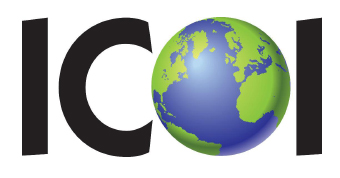Orthodontics Katy, TX - Olim and Associates

Sometimes, the teeth are positioned incorrectly when the mouth is closed, causing an improper bite. Known as malocclusion, this condition is often treated by a branch of dentistry known
as orthodontics. Orthodontic care treats a variety of other issues. For instance, controlling certain aspects of facial growth is handled through dentofacial orthopedics. Development and
shape of the jaw is handled, too.
Orthodontics was long ago called orthodontia. The Greek words orthos, meaning "perfect, proper, or straight", and dontos, referring to "teeth" created the word.
Cosmetic dentistry, aimed at helping a patient improve the appearance of their teeth, is included in orthodontics.
Benefits of Orthodontic Care
Each practitioner utilizes a variety of medical and dental devices, such as headgear, braces or Invisalign. These devices are used to aid in:
- Lessening wide gaps in between teeth
- Ensuring proper alignment of tips of teeth
- Fixing crooked teeth
- Improving speech or eating issues (oral function)
- Managing long-term health of teeth and gums
- Preventing excessive trauma and wear related to the teeth
- Treating an improper or misaligned bite
Examples of Orthodontic Appliances
All orthodontic care appliances fall into one of two categories: removable and fixed.
Fixed Appliances
Such appliances are the most common ones found within orthodontics. They're utilized when precision is a necessity. Of course, patients can eat without issue with such appliances, but certain foods and drinks should be avoided. This includes hard candies, toffee and carbonated drinks. Individuals who play in contact sports should notify their doctor so that gum shields can be created.
The following are examples of fixed orthodontic appliances:
Braces:
These appliances consist of brackets, bands and wires. Bands are affixed around the teeth to serve as anchors and brackets connect on the front of each tooth. Shaped in an arch, wires are passed through the brackets and affixed to bands. When each wire is tightened, the teeth receive tension, moving each tooth into its proper position.
Patients visit their orthodontist in Katy, TX once per month to allow for adjustment of the braces. Treatment can last from a few months to multiple years, depending upon various factors. In most cases, children like having colored braces and adults often choose clear styles.
Fixed Space Maintainers:
If a child loses a tooth, space maintainers ensure the two surrounding teeth can't move into that empty space until adult teeth start to grow. Bands are affixed to a tooth next to the space and wire connects the band to another tooth.
Special Fixed Appliances:
Thumb sucking and tongue thrusting can be controlled by these appliances. A patient might find them uncomfortable, especially during eating. Therefore, experts recommend that they only be used when deemed necessary.
Removable Appliances
Typically, such appliances are used to treat minor issues. This can include the prevention of thumb sucking or fixing marginally crooked teeth. They shouldn't be taken out, except for eating, cleaning and flossing. Sometimes, an orthodontist might advise patients to remove them during other activities, such as playing musical instruments and cycling.
A few examples of removable appliances include the following:
Cheek and Lip Bumpers:
Specially designed to relieve pressure places on the teeth by the lips or cheeks.
Clear Aligners:
An alternative to traditional braces in adults, these appliances are rarely noticed by other individuals and can be removed for various tasks. Olim & Associates is proud to offer Invisalign clear aligners to help patients straighten their smile. Learn more about Invisalign here.
Headgear:
A strap goes around the back of the head and fastens to a metal wire on the front. These devices are aimed at slowing upper jaw growth and ensuring that the back teeth stay in position as the front teeth are pulled backwards.
Palatal Expander:
These appliances are supposed to widen the upper arch of the jaw. It's comprised of a plastic plate put onto the roof of the mouth (the palate). This plate features screws that place pressure on joints within the bones, making them move outward to expand that palatal area in size.
Splints (Appliances for repositioning the jaw):
These appliances are put in the lower or top jaw to make sure the jaw closes as intended. Splints are used to treat TMJ syndrome.
Removable Retainers:
Retainers are put under the mouth's roof and are designed to prevent the teeth from returning to their original spots. If retainers are slightly changed, they can prevent children
from sucking on their thumbs.
Removable Space Maintainers:
These maintainers work as an alternative to fixed maintainers.
At What Age Can Orthodontic Care Start?
Proper oral hygiene is necessary prior to the start of orthodontic care work. When appliances are affixed to the teeth, food particles are likely to become stuck. Patients will have
to brush their teeth more thoroughly and often in order to prevent tooth decay during treatment.
Children under 12 or 13 years-old often won't start any sort of orthodontic treatment. When adult teeth finally show themselves and developed, treatment can begin. Sometimes, treatment
can be started later on if tooth problems have not fully developed yet.
However, a cleft lip or palate can result in a child receiving orthodontic care before the adult teeth have come in.
Individuals who don't exercise proper oral hygiene will find themselves more likely to experience tooth decay during treatment.
Diagnosing Dental Issues and Proceeding with Treatment Options
Assessment:
A doctor must assess each patient's teeth in order to predict how their teeth will develop before and without treatment. The following diagnostic procedures will be carried out:
- Full dental and medical health record,
- Clinical examinations,
- Jaw and teeth x-rays
- Plaster molds of the teeth.
After an assessment is performed, the doctor will come up with a treatment plan. Each patient will require a slightly different approach because each person is unique. Therefore, two patients with similar problems might have completely different orthodontic care regimens.




